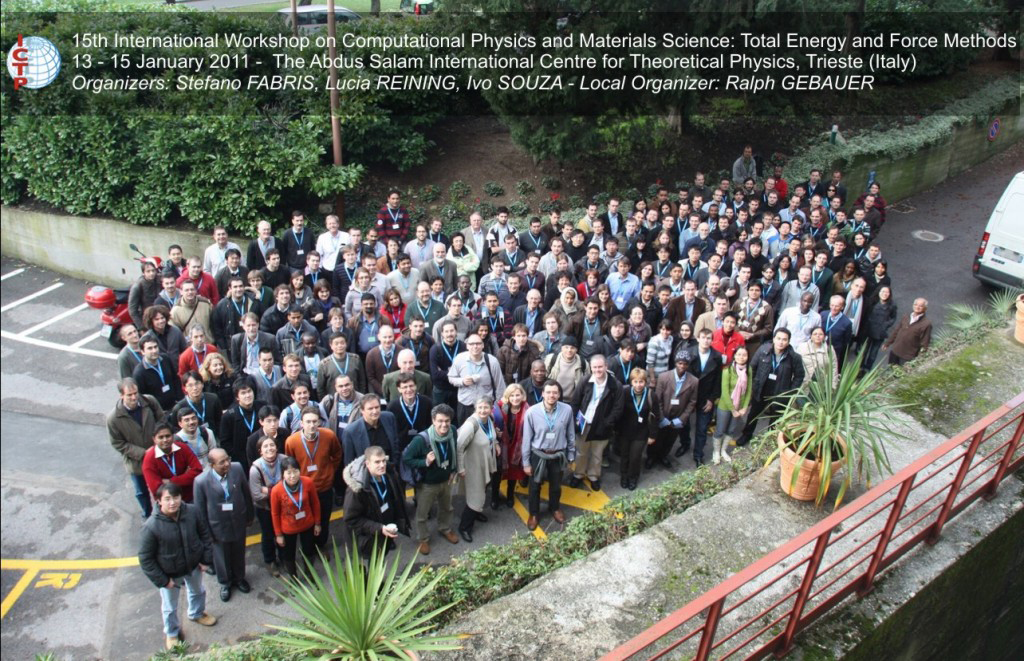We just had a great 2-day workshop on the Vienna Ab-initio Simulation Package (
VASP) organized by the KAUST Research Computing from May 10 to 11, 2016. The workshop featured a combination of lectures and hands-on tutorials by Dr. Martijn Marsman (who is one of the main developers of the VASP) from the VASP team in Vienna. This was not an introductory workshop, it focused more on the advanced features of the VASP, such as the hybrid functionals, linear response, GW, BSE, and ACFDT (RPA). At KAUST, there are three research groups that use the VASP heavily: Computational Physics and Materials Science (
CPMS) group, Solar & Photovoltaics Engineering Research Center (
SPERC), and KAUST Catalysis Center (
KCC). Among these groups, I think we at CPMS use the VASP the most, with 24 seats.
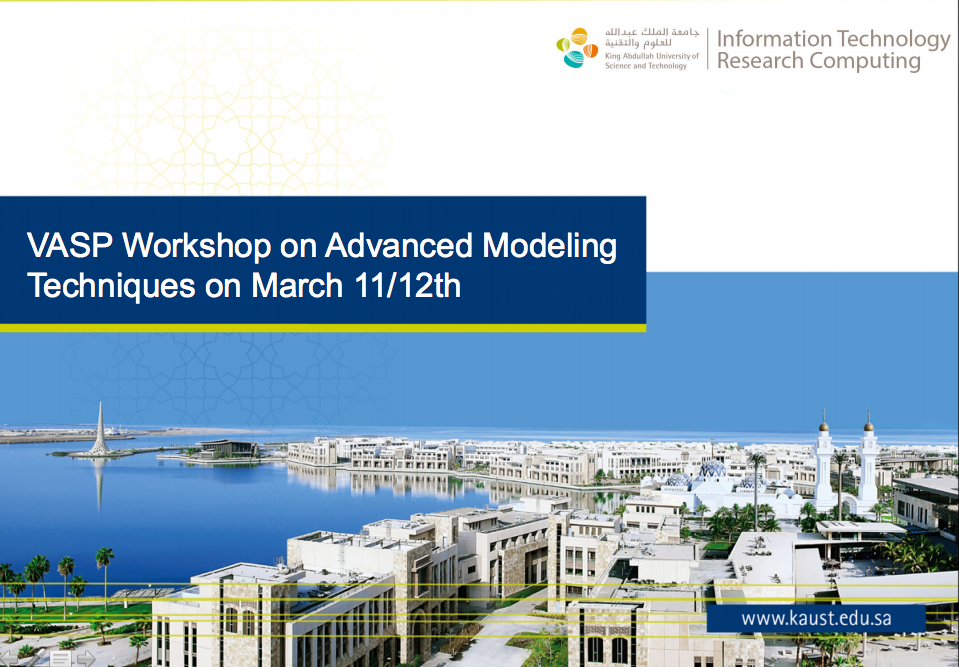
Similarly, last year we had a 2-day
workshop on VASP and
MedeA® modeling suite, from March 11 to 12, 2015. The speakers were Christan Minot (professor of Chemistry at Université Pierre et Marie Curie, Paris VI), Walter Wolf, René Windiks and Alexander Mavromaras from
Materials Design, Inc. The first day of the workshop introduced pretty much everything about the fundamentals of the VASP. The second day was focused primarily on the hands-on tutorials with the MedeA® modeling suite and integrated codes such as structure databases, graphical building and analysis tools and the integrated use of solvers such as VASP-TTS, LAMMPS (molecular dynamics), GIBBS (Monte Carlo) and MOPAC. Participants were be able to interact with MedeA on dedicated workstations and worked on explicit application examples with support from Materials Design staff.

The Vienna Ab initio Simulation Package (VASP) is a computer program for atomic scale materials modeling, e.g. electronic structure calculations and quantum-mechanical molecular dynamics, from first principles. VASP computes an approximate solution to the many-body Schrödinger equation, either within density functional theory (DFT), solving the Kohn-Sham equations, or within the Hartree-Fock (HF) approximation, solving the Roothaan equations. Hybrid functionals that mix the Hartree-Fock approach with density functional theory are implemented as well. Furthermore, Green’s functions methods (GW quasiparticles, and ACFDT-RPA) and many-body perturbation theory (2nd-order Møller-Plesset) are available in VASP.
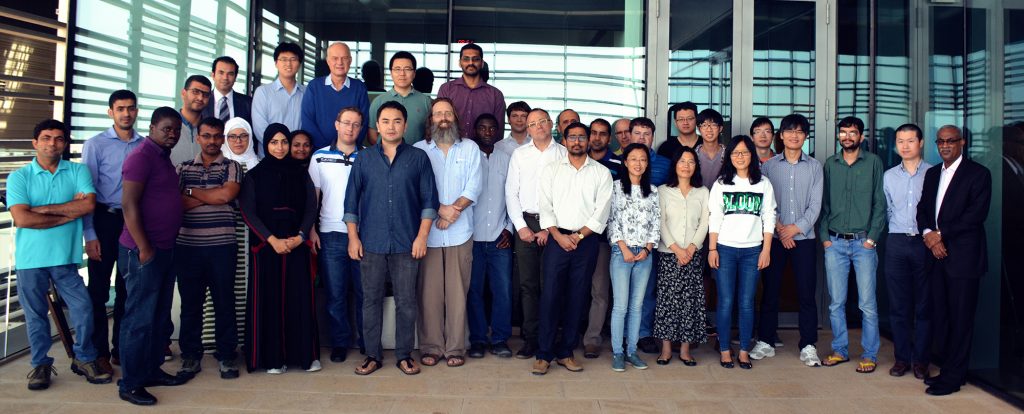
 Similarly, last year we had a 2-day workshop on VASP and MedeA® modeling suite, from March 11 to 12, 2015. The speakers were Christan Minot (professor of Chemistry at Université Pierre et Marie Curie, Paris VI), Walter Wolf, René Windiks and Alexander Mavromaras from Materials Design, Inc. The first day of the workshop introduced pretty much everything about the fundamentals of the VASP. The second day was focused primarily on the hands-on tutorials with the MedeA® modeling suite and integrated codes such as structure databases, graphical building and analysis tools and the integrated use of solvers such as VASP-TTS, LAMMPS (molecular dynamics), GIBBS (Monte Carlo) and MOPAC. Participants were be able to interact with MedeA on dedicated workstations and worked on explicit application examples with support from Materials Design staff.
Similarly, last year we had a 2-day workshop on VASP and MedeA® modeling suite, from March 11 to 12, 2015. The speakers were Christan Minot (professor of Chemistry at Université Pierre et Marie Curie, Paris VI), Walter Wolf, René Windiks and Alexander Mavromaras from Materials Design, Inc. The first day of the workshop introduced pretty much everything about the fundamentals of the VASP. The second day was focused primarily on the hands-on tutorials with the MedeA® modeling suite and integrated codes such as structure databases, graphical building and analysis tools and the integrated use of solvers such as VASP-TTS, LAMMPS (molecular dynamics), GIBBS (Monte Carlo) and MOPAC. Participants were be able to interact with MedeA on dedicated workstations and worked on explicit application examples with support from Materials Design staff. The Vienna Ab initio Simulation Package (VASP) is a computer program for atomic scale materials modeling, e.g. electronic structure calculations and quantum-mechanical molecular dynamics, from first principles. VASP computes an approximate solution to the many-body Schrödinger equation, either within density functional theory (DFT), solving the Kohn-Sham equations, or within the Hartree-Fock (HF) approximation, solving the Roothaan equations. Hybrid functionals that mix the Hartree-Fock approach with density functional theory are implemented as well. Furthermore, Green’s functions methods (GW quasiparticles, and ACFDT-RPA) and many-body perturbation theory (2nd-order Møller-Plesset) are available in VASP.
The Vienna Ab initio Simulation Package (VASP) is a computer program for atomic scale materials modeling, e.g. electronic structure calculations and quantum-mechanical molecular dynamics, from first principles. VASP computes an approximate solution to the many-body Schrödinger equation, either within density functional theory (DFT), solving the Kohn-Sham equations, or within the Hartree-Fock (HF) approximation, solving the Roothaan equations. Hybrid functionals that mix the Hartree-Fock approach with density functional theory are implemented as well. Furthermore, Green’s functions methods (GW quasiparticles, and ACFDT-RPA) and many-body perturbation theory (2nd-order Møller-Plesset) are available in VASP.



 Few years ago I switched from SVN (Subversion) to
Few years ago I switched from SVN (Subversion) to 




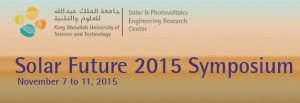
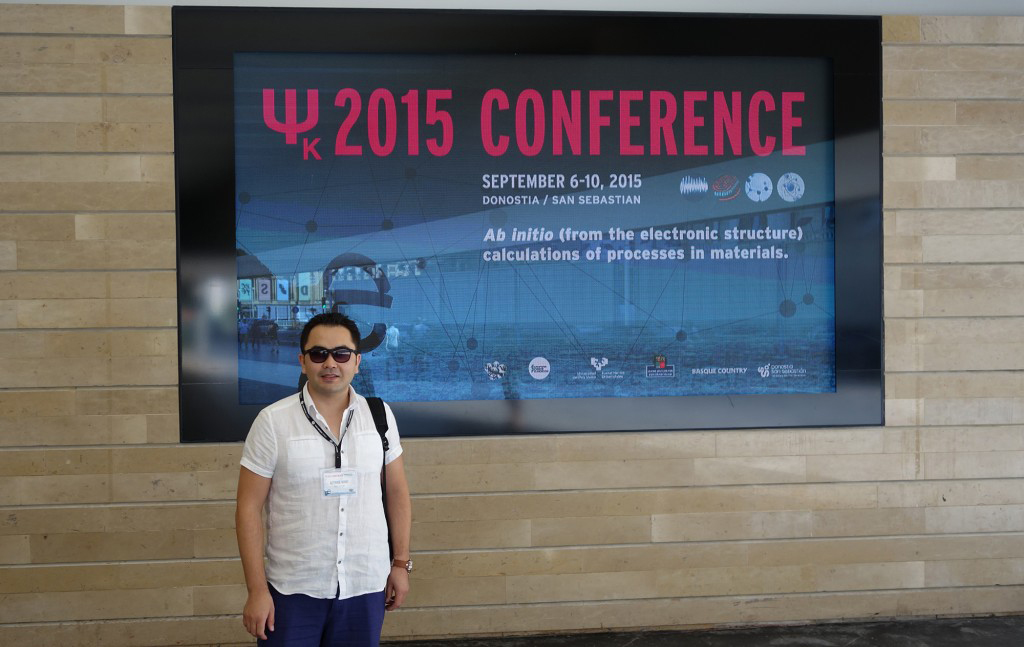



 I knew about the Materials Project back in 2012. During my Ph.D. study I had to spend several weeks to calculate and estimate the stable phase diagrams of complex oxides such as InGaZnO4 by writing my own code with MATLAB but thanks to the Materials Project nowadays one can do it in a very short time. This already shows why I am a big fan of the Materials Project.
I knew about the Materials Project back in 2012. During my Ph.D. study I had to spend several weeks to calculate and estimate the stable phase diagrams of complex oxides such as InGaZnO4 by writing my own code with MATLAB but thanks to the Materials Project nowadays one can do it in a very short time. This already shows why I am a big fan of the Materials Project. Dr. Kristin Persson and Prof. Gerbrand Ceder have put tremendous effort into this project. Also, I think the primary engines powering the Materials Project are made possible by Dr. Shyue Ping Ong (
Dr. Kristin Persson and Prof. Gerbrand Ceder have put tremendous effort into this project. Also, I think the primary engines powering the Materials Project are made possible by Dr. Shyue Ping Ong (

 In May 2015, KAUST acquired and installed a new Cray XC40 supercomputer: Shaheen II. This machine delivers 25 times the sustained computing capability of KAUST’s current system (Shaheen I, IBM BG/P). Shaheen II, with a theoretical peak performance of 7.2 PFLOP/s, is composed of 6,174 dual sockets compute nodes based on 16 cores Intel Haswell processors running at 2.3GHz representing a total of 197,568 cores. The processors are tightly integrated with a richly layered memory hierarchy and dragonfly interconnection network with a total storage space in the parallel file system of 17 PB. The homogenous design of Shaheen II Cray XC40 with only Haswell makes it suitable for most, if not all, of KAUST applications.
In May 2015, KAUST acquired and installed a new Cray XC40 supercomputer: Shaheen II. This machine delivers 25 times the sustained computing capability of KAUST’s current system (Shaheen I, IBM BG/P). Shaheen II, with a theoretical peak performance of 7.2 PFLOP/s, is composed of 6,174 dual sockets compute nodes based on 16 cores Intel Haswell processors running at 2.3GHz representing a total of 197,568 cores. The processors are tightly integrated with a richly layered memory hierarchy and dragonfly interconnection network with a total storage space in the parallel file system of 17 PB. The homogenous design of Shaheen II Cray XC40 with only Haswell makes it suitable for most, if not all, of KAUST applications.

